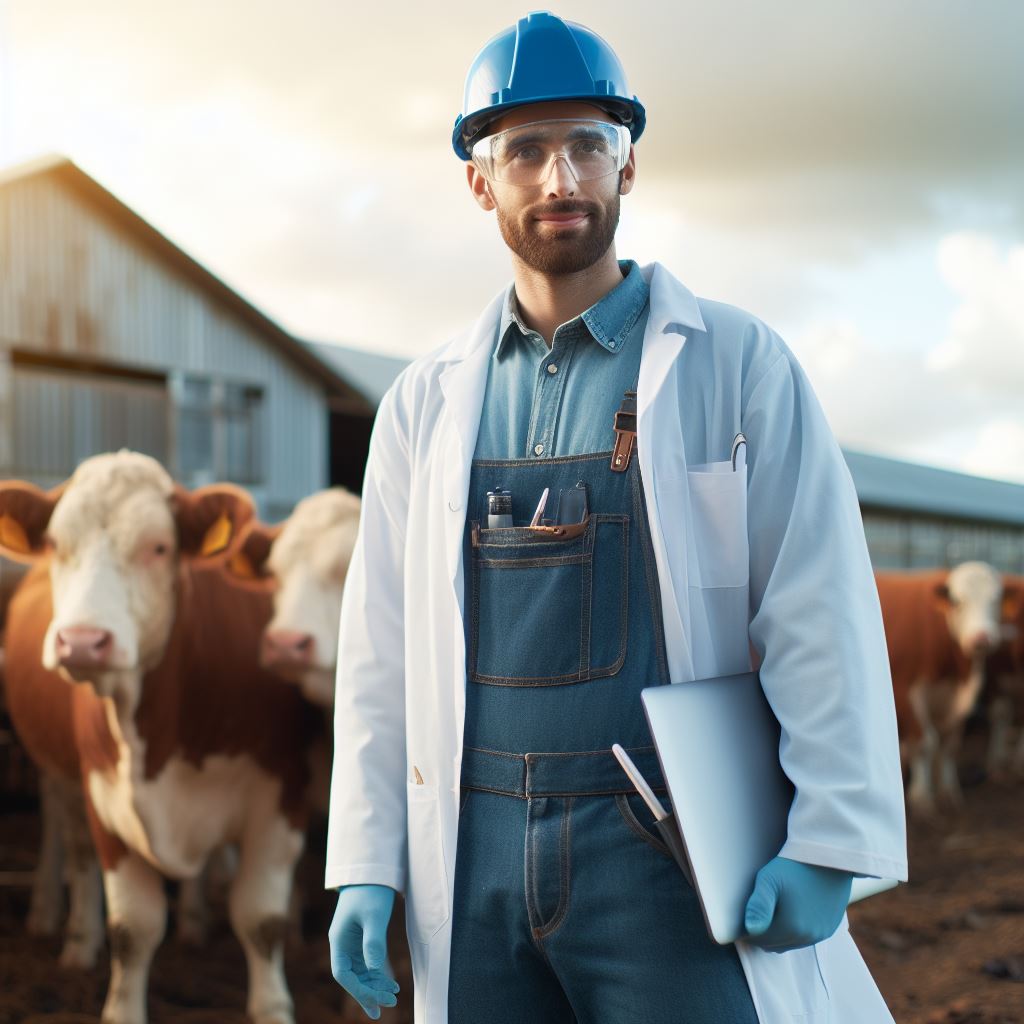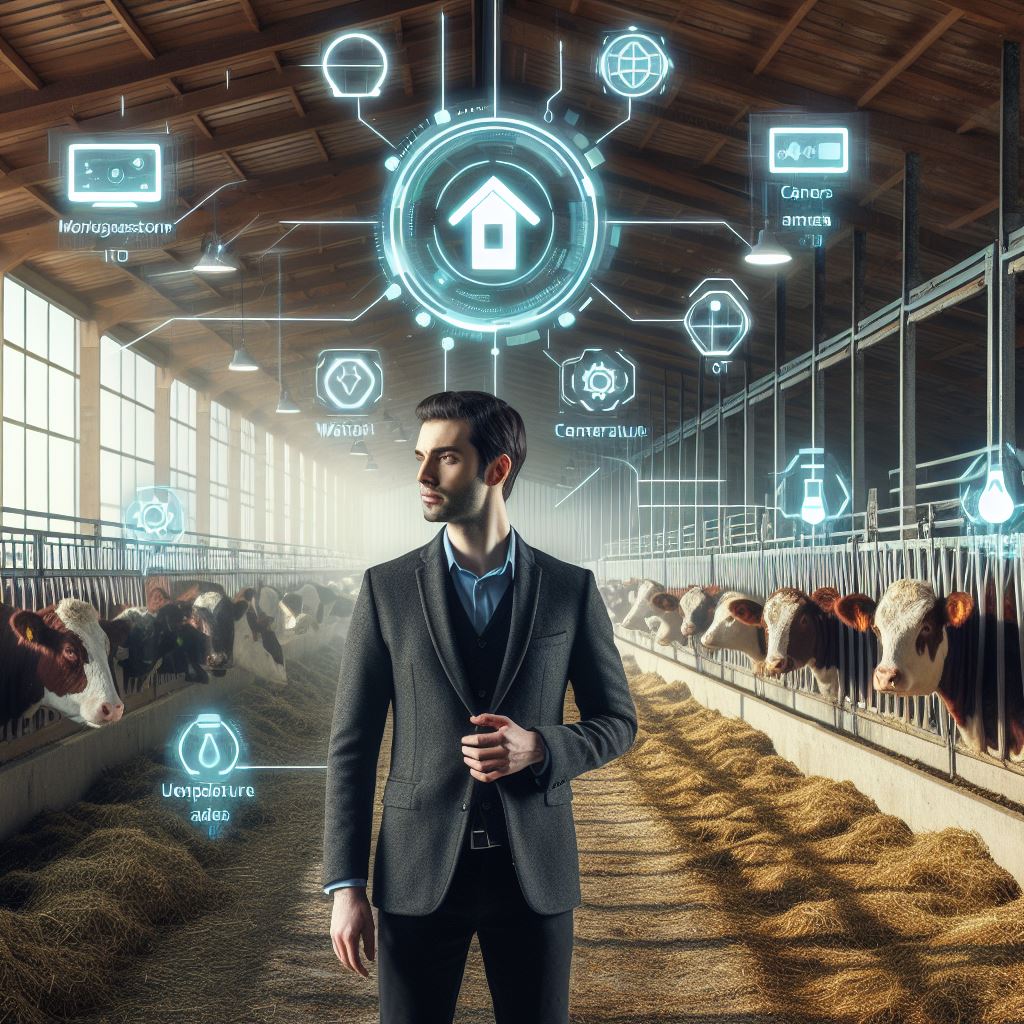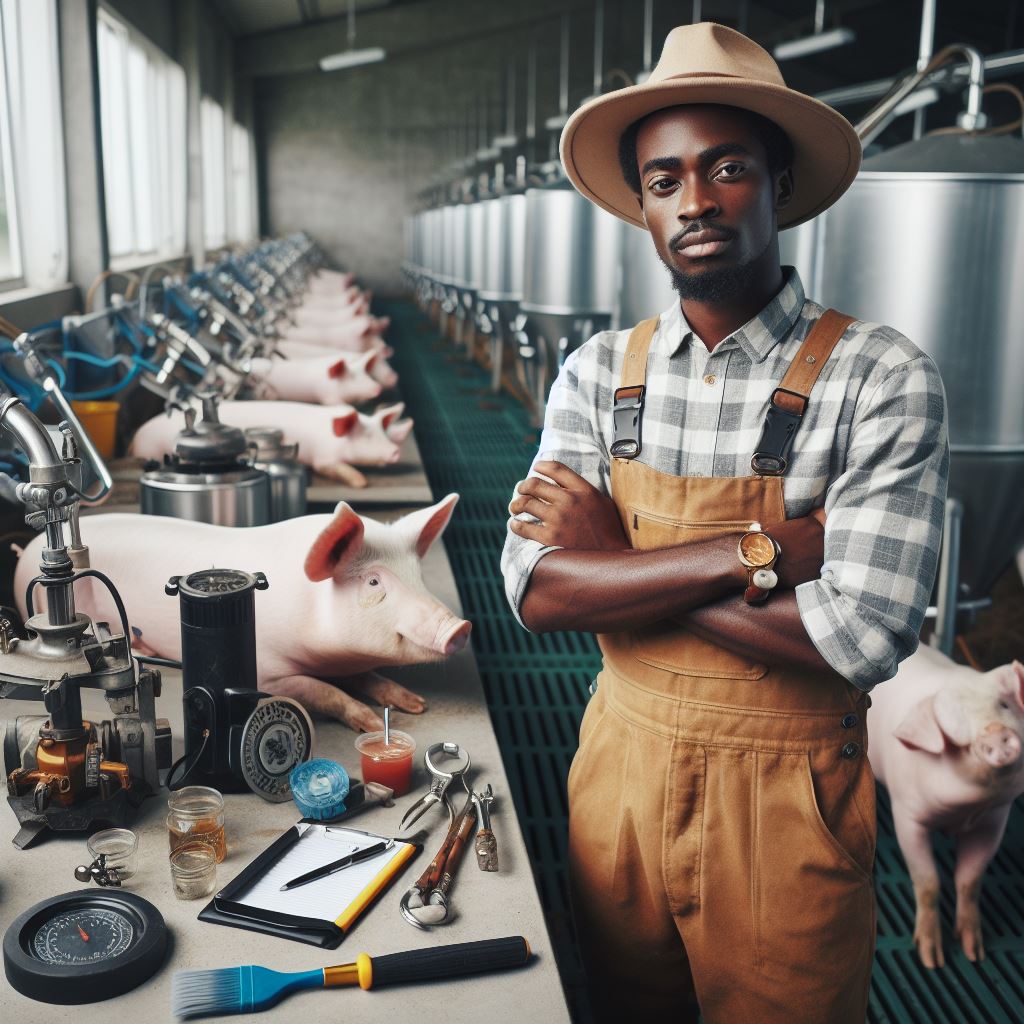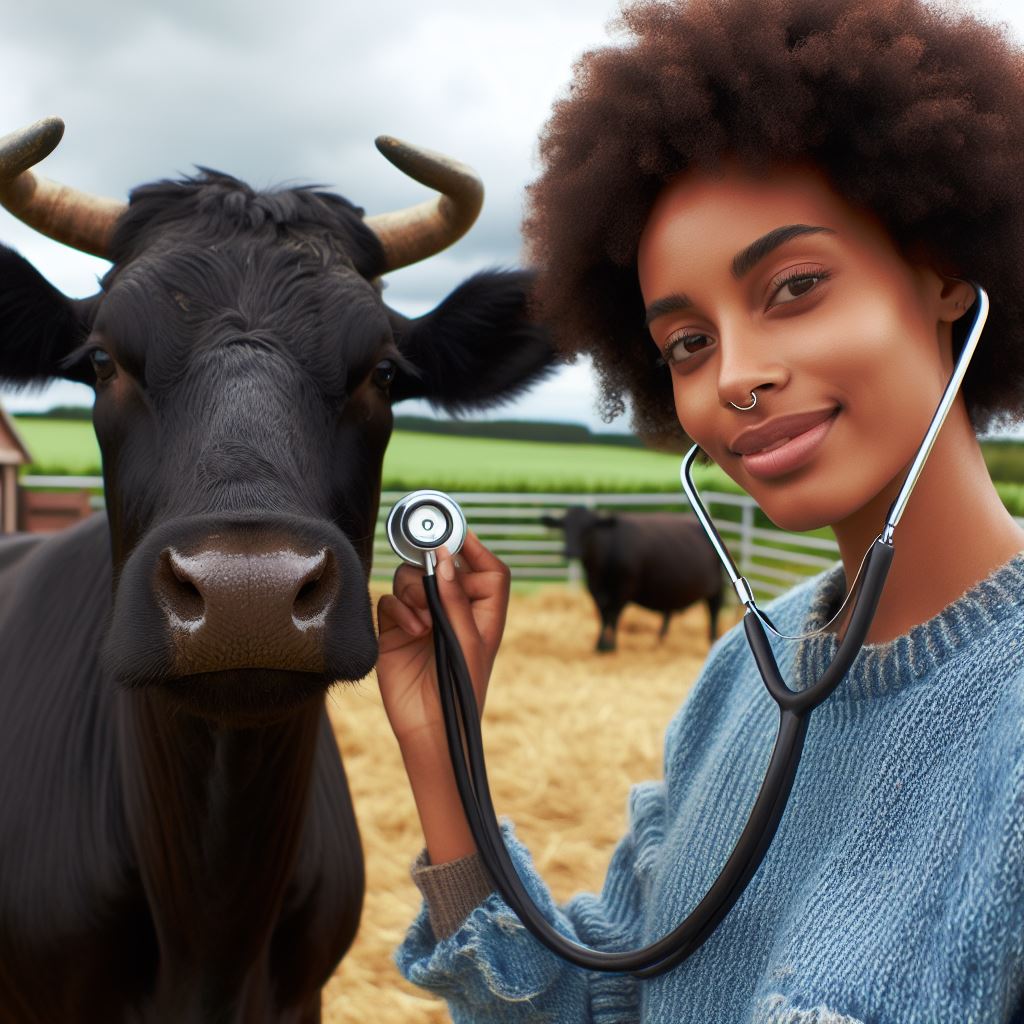Introduction
Biosecurity is crucial in livestock farming to protect animals from diseases and ensure their well-being.
It encompasses a range of practices aimed at preventing the entry and spread of pathogens within livestock facilities.
By implementing biosecurity measures, farmers can minimize the risk of disease outbreaks and safeguard the health and productivity of their livestock.
Biosecurity is defined as a set of protocols and procedures that aim to prevent and control the introduction and spread of diseases in livestock populations.
It involves identifying potential risks, implementing preventive measures, and adopting strict hygiene practices to minimize disease transmission.
These measures can include controlling the movement of people, vehicles, and equipment, as well as implementing quarantine and vaccination protocols.
Effective biosecurity measures are essential in livestock farming because diseases can have devastating consequences on animal health and productivity.
Outbreaks can lead to increased mortality rates, reduced fertility, lower growth rates, and decreased milk or meat production.
Moreover, diseases can spread rapidly within a herd, as well as from farm to farm, causing economic losses and posing a threat to food security.
In essence, biosecurity plays a pivotal role in safeguarding the livestock industry.
By implementing biosecurity measures, farmers can minimize the risk of disease transmission, protect the health and welfare of their animals, and ensure the sustainability and profitability of their operations.
It is crucial for farmers to prioritize biosecurity as an integral part of their livestock management practices.
Common Biosecurity Risks
In order to effectively safeguard your livestock, it is crucial to understand the common diseases and infections they may be exposed to.
Here, we will discuss the introduction to these diseases as well as how they can spread.
1. Introduction to common diseases and infections
Livestock are susceptible to a range of diseases and infections, including:
Transform Your Agribusiness
Unlock your farm's potential with expert advice tailored to your needs. Get actionable steps that drive real results.
Get Started- Mastitis: This is an inflammation of the udder, commonly found in dairy cows.
- Foot-and-mouth disease: A highly contagious viral infection that affects cattle, sheep, and pigs.
- Avian influenza: Commonly known as bird flu, it can affect various bird species, such as chickens and ducks.
- Swine fever: Also known as hog cholera, it is a viral disease that affects domestic pigs and wild boars.
- Brucellosis: A bacterial infection that primarily affects cattle, causing abortion and infertility.
These diseases can have severe consequences for livestock health and productivity, leading to economic losses for farmers.
2. How these diseases can spread
Understanding how diseases spread is essential for implementing effective biosecurity measures.
Here are some common ways these diseases can be transmitted:
- Direct contact: Livestock can transmit diseases through direct physical contact, such as nose-to-nose interaction or skin-to-skin contact.
- Insect vectors: Certain insects, such as mosquitoes or ticks, can carry and transfer diseases from one animal to another.
- Fecal-oral transmission: Contaminated food or water that is ingested by livestock can lead to the spread of diseases.
- Aerosol transmission: Airborne particles carrying pathogens can infect susceptible animals when they are in close proximity.
- Contaminated equipment or personnel: Diseases can be introduced into a livestock facility through contaminated equipment, vehicles, or even farm workers.
It is crucial to be aware of these transmission routes and take appropriate preventive measures to minimize the risk of disease outbreaks.
In general, understanding the common biosecurity risks faced by livestock is essential for their protection and overall farm profitability.
By identifying the potential diseases and infections that can affect your animals and knowing how they can spread, you can effectively implement preventive measures.
This will help safeguard the health and well-being of your livestock, ensuring a sustainable and successful farming operation.
Biosecurity Measures for Livestock Farms
Proper biosecurity measures are crucial for protecting the health and well-being of livestock on farms.
By implementing a range of protocols and practices, farmers can greatly reduce the risk of disease outbreaks and ensure the safety of their animals.
Here are some key biosecurity measures that every livestock farm should follow:
1. Regular cleaning and disinfection protocols
Regular cleaning and disinfection of barns, pens, equipment, and vehicles are essential for preventing the spread of pathogens.
This helps in eliminating bacteria, viruses, and parasites that could harm the livestock.
2. Isolation and quarantine of new animals
Whenever introducing new animals to the farm, it is important to isolate and quarantine them for a certain period.
This allows for observation and testing to ensure that they are free from any diseases before being integrated with the rest of the herd.
3. Restricted access to the farm premises
To minimize the risk of contagion, access to the farm premises should be limited only to essential personnel.
Visitors should be restricted, and any who enter should follow strict biosecurity protocols, such as washing hands and wearing protective clothing.
4. Use of protective clothing and equipment
All farm workers and visitors should wear appropriate protective clothing and equipment, such as gloves, boots, coveralls, and masks.
This prevents them from carrying pathogens into the farm and spreading them to the animals.
5. Vaccinations and health monitoring
Vaccinations are an effective way to protect livestock from common diseases.
Farmers should follow recommended vaccination schedules and ensure regular health monitoring of their animals to detect any signs of illness or potential outbreaks.
6. Proper waste management
Implementing proper waste management practices is crucial for biosecurity.
Dispose of animal waste and carcasses properly to prevent the spread of diseases.
This includes following regulations for burial, composting, or safe disposal methods.
By implementing these biosecurity measures, livestock farmers can significantly reduce the risk of disease outbreaks and protect the health of their animals.
Showcase Your Farming Business
Publish your professional farming services profile on our blog for a one-time fee of $200 and reach a dedicated audience of farmers and agribusiness owners.
Publish Your ProfileIt is important to continually educate and train farm staff on biosecurity protocols and stay up to date with the latest research and best practices in order to ensure the highest level of biosecurity on the farm.
Biosecurity Technology and Tools
A. Introduction to the use of technology in biosecurity
In today’s modern world, technology plays a vital role in enhancing biosecurity measures for livestock.
It has revolutionized the way farmers and animal owners safeguard their animals from potential diseases and threats.
B. Overview of different biosecurity tech and tools available
With advancements in technology, there are various biosecurity tech and tools available that help ensure the health and safety of livestock.
Let’s explore some of these innovative solutions:
1. Electronic identification tags
Electronic identification tags are small devices fitted onto animals that provide unique identification codes.
These tags help in tracking and monitoring livestock, enabling quick identification and efficient herd management.
2. Remote monitoring systems
Remote monitoring systems enable farmers to monitor their livestock from a distance.
Through cameras and sensors, these systems detect any abnormal behavior or signs of distress, allowing timely intervention to prevent disease spread.
3. Automatic disinfection systems
Automatic disinfection systems are designed to provide efficient and effective sanitization for livestock and their surroundings.
These systems reduce the risk of disease transmission by automatically dispensing disinfectants in barns, vehicles, and equipment.
4. Thermal imaging cameras
Thermal imaging cameras are used to detect abnormal body temperatures in livestock.
By capturing heat signatures, these cameras identify potential signs of illness, enabling early detection and isolation of affected animals to prevent disease outbreaks.
5. Disease detection software
Disease detection software utilizes advanced algorithms to analyze data from various sources, such as farm records, environmental conditions, and animal health records, to detect any potential disease outbreaks.
This early warning system allows proactive measures to be taken to prevent the spread of diseases.
These biosecurity tech and tools are instrumental in effectively safeguarding livestock and mitigating the risks associated with disease outbreaks.
They provide farmers and animal owners with enhanced capabilities to monitor their animals’ health and take preventive measures.
Moreover, the use of such technology saves time and resources, allowing farmers to focus on other crucial aspects of animal husbandry.
By leveraging these innovations, farmers can ensure the well-being of their livestock and maintain a thriving and sustainable agricultural industry.
In fact, the integration of technology in biosecurity has revolutionized the approach to safeguarding livestock.
From electronic identification tags to disease detection software, these tools provide valuable insights and enable proactive measures for disease prevention.
As technology continues to advance, there will be even more effective solutions to protect livestock and ensure food security.
Benefits of Biosecurity Technology
A. Improved disease prevention and control
- Biosecurity technology helps in preventing and controlling disease outbreaks through effective surveillance systems.
- It allows for early detection of diseases, enabling prompt and targeted interventions to prevent their spread.
- By implementing biosecurity measures, farmers can reduce the risk of introducing pathogens into their livestock population.
B. Reduction in mortality rates
- Proper biosecurity measures can significantly reduce mortality rates among livestock due to disease-related causes.
- By minimizing the risk of infections, farmers can ensure the overall health and well-being of their animals.
- This leads to improved survival rates and better animal welfare.
C. Increased productivity and profitability
- Biosecurity technology plays a crucial role in ensuring optimal productivity and profitability in livestock farming.
- By preventing disease outbreaks, farmers can maintain high levels of productivity and minimize economic losses.
- Healthy animals are more productive, resulting in higher yields, quality products, and increased profits.
D. Enhanced farm management and decision-making
- Biosecurity technology provides valuable data and insights that enhance farm management and decision-making processes.
- Through real-time monitoring and analysis, farmers can identify potential risks and make informed choices.
- It helps in implementing appropriate control measures, optimizing resource allocation, and improving overall farm efficiency.
E. Better traceability and compliance with regulations
- Biosecurity technology enables better traceability of livestock movements and ensures compliance with regulations.
- By using electronic identification systems and tracking tools, farmers can trace the origin of animals and their movements.
- This helps in disease control, disease spread prevention, and maintaining transparency in the supply chain.
Essentially, the implementation of biosecurity technology in livestock farming offers numerous benefits.
It enhances disease prevention and control, leading to decreased mortality rates and improved animal welfare.
Additionally, it boosts productivity and profitability by maintaining a healthy and productive livestock population.
The technology also facilitates better farm management and decision-making through data-driven insights.
Finally, it enables better traceability and compliance with regulations, ensuring transparency and safety in the livestock industry.
Embracing biosecurity technology is essential for safeguarding the livestock sector and ensuring sustainable farming practices.
Read: Water Management in Grazing Fields

Challenges and Limitations
A. Cost considerations for implementing biosecurity technology
- Investing in biosecurity technology can be expensive, requiring significant financial resources.
- The initial costs of purchasing and installing the necessary equipment and systems can be prohibitive for some farmers.
- Regular maintenance and updates of the technology may also incur additional expenses.
- Small-scale livestock operations may struggle to afford the upfront investment in biosecurity technology.
B. Training and technical support
- Proper implementation of biosecurity technology requires adequate training for farmers and staff.
- Understanding how to operate and maintain the technology is crucial to its effectiveness.
- Training programs and ongoing technical support should be available to ensure that farmers can utilize the technology correctly.
- Technological advancements and updates may require additional training to keep up with new features and functions.
C. Potential risks of relying solely on technology
- Biosecurity technology should not be viewed as a stand-alone solution but rather as a complement to existing biosecurity practices.
- There is a risk of over-reliance on technology, leading to complacency in other critical aspects of biosecurity.
- Technical malfunctions or system failures could leave livestock vulnerable to disease outbreaks.
- Human error in using and maintaining the technology can compromise its effectiveness.
- A comprehensive biosecurity plan should consider the limitations and potential failures of relying solely on technology.
While biosecurity technology offers significant advantages in protecting livestock, it is essential to acknowledge the challenges and limitations it presents.
Cost considerations can be a significant barrier, especially for smaller farms with limited budgets.
Training and technical support are crucial to ensure proper utilization of the technology, and farmers must stay updated with advances in the field.
Additionally, relying solely on technology may lead to a false sense of security and neglect of other vital biosecurity practices. Technical malfunctions and human error can also compromise the effectiveness of the technology.
To overcome these challenges, farmers should develop a holistic biosecurity plan that incorporates technology as part of a larger strategy to safeguard their livestock.
Read: Effective Fencing for Pasture Rotation
Case Studies and Success Stories
Implementing biosecurity technology in livestock farms has proven to be highly successful, showcasing a positive impact on both herd health and farm operations.
Here are some noteworthy case studies and success stories:
1. Smith Family Farm
- Incorporated a comprehensive biosecurity system that included surveillance cameras, visitor protocols, and strict hygiene measures.
- Successfully prevented the entry of infectious diseases, resulting in improved overall herd health.
- Reduced the need for antibiotics and medications, saving on veterinary costs.
- Farm operations became more streamlined and efficient due to increased disease prevention and early detection.
2. Johnson Livestock Ranch
- Implemented a biosecurity AI system that continuously monitored animal behavior and detected any signs of illness.
- Enabled early detection of sick animals, allowing for immediate isolation and treatment, preventing the spread of diseases.
- Significantly reduced mortality rates and improved overall herd productivity.
- Farmers reported increased peace of mind and reduced stress levels knowing that the herd was constantly monitored.
3. Green Acres Dairy
- Utilized a robust biosecurity technology solution that included automatic gates, footbaths, and regular health screenings.
- Minimized the risk of introducing pathogens to the farm by implementing stringent visitor protocols.
- Reported zero cases of contagious diseases in their herd for the past three years.
- Improved biosecurity measures also resulted in increased milk production and higher quality milk.
4. Thompson Poultry Farm
- Installed a state-of-the-art ventilation system that filtered airborne pathogens, creating a cleaner and safer environment for the poultry.
- Dramatically reduced the incidence of respiratory diseases, resulting in healthier and more productive birds.
- Implemented strict control measures on the movement of personnel and equipment, further enhancing biosecurity.
- Increased biosecurity measures also led to significant cost savings by reducing the need for antibiotics and vaccines.
5. Wilson Swine Farm
- Adopted a comprehensive biosecurity plan that included regular vaccinations, thorough cleaning and disinfection protocols, and controlled animal access.
- Successfully eliminated the occurrence of major pig diseases and reduced mortality rates by over 50%.
- Implemented a strict quarantine policy for newly introduced animals, preventing disease transmission.
- Farmers reported higher profits due to improved pig health and reduced medication costs.
The above case studies demonstrate how the successful implementation of biosecurity technology in livestock farms can have a significant positive impact on both animal health and overall farm operations.
By investing in advanced surveillance systems, artificial intelligence, and stringent protocols, farms can effectively safeguard their livestock and ensure optimal productivity in a safe and disease-free environment.
Read: Sheep & Goat Vaccination Schedules
Showcase Your Farming Business
Publish your professional farming services profile on our blog for a one-time fee of $200 and reach a dedicated audience of farmers and agribusiness owners.
Publish Your ProfileFuture Developments in Biosecurity Technology
In the ever-evolving field of biosecurity technology, there are several emerging technologies that hold great potential for safeguarding livestock.
These advancements have the ability to revolutionize the way we approach biosecurity and protect our valuable livestock from diseases and threats.
A. Emerging technologies and their potential for livestock biosecurity
1. Genetic Engineering
- The use of genetic engineering techniques in livestock breeding can help develop disease-resistant animals.
- Genetically modifying livestock can enhance their immune systems and make them less susceptible to infections.
- This technology has the potential to significantly reduce the impact of diseases on livestock populations.
2. Precision Farming
- Precision farming techniques, such as the use of sensors and drones, can monitor livestock health and detect early signs of diseases.
- This real-time data can aid in prompt disease management and prevent outbreaks from spreading.
- Precision farming can also optimize resource usage and minimize environmental impacts, ensuring sustainable livestock production.
3. Artificial Intelligence
- Artificial intelligence algorithms can process vast amounts of data and identify patterns that humans might miss.
- These algorithms can be used to predict disease outbreaks, enabling preemptive measures to be taken.
- AI-powered systems can also control biosecurity measures, such as automated disinfection procedures or access control, minimizing human error.
4. Blockchain Technology
- Blockchain technology can provide a secure and transparent record of livestock movements, verification of vaccination records, and traceability of products.
- By enhancing data integrity, blockchain technology can help prevent the spread of diseases through contaminated livestock or products.
- Consumers can also have confidence in the biosecurity measures taken throughout the supply chain, ensuring safer food choices.
5. Nanotechnology
- Nanotechnology offers new possibilities in disease detection and targeted delivery of vaccines or medications.
- Through nanosensors, diseases can be detected at an early stage, enabling prompt treatment and containment.
- Nanoscale delivery systems can also enhance the efficacy of vaccines and medications, reducing the risk of resistance.
The future of biosecurity technology holds immense promise.
With the rapid pace of technological advancements, we can anticipate even more sophisticated tools and solutions to safeguard livestock in the coming years.
B. Predictions for the future of biosecurity technology include
- Integration of multiple technologies to create comprehensive biosecurity systems that can adapt to evolving threats.
- Greater connectivity and data sharing between different stakeholders, enabling swift and coordinated biosecurity responses.
- Development of portable biosecurity devices that can be easily deployed and provide real-time monitoring.
- Advancements in vaccine technology to combat emerging diseases and strains.
- Expansion of biosecurity measures beyond physical barriers to include molecular-level control and manipulation of pathogens.
As biosecurity technology continues to advance, the industry must also address ethical considerations, privacy concerns, and potential unintended consequences.
It is crucial to strike a balance between innovation and responsible use of technology to ensure the welfare and sustainability of livestock systems.
Generally, emerging technologies such as genetic engineering, precision farming, AI, blockchain, and nanotechnology offer immense potential to revolutionize biosecurity and protect livestock from diseases and threats.
As these technologies continue to develop, the future of biosecurity looks promising, with comprehensive and adaptive systems that can mitigate risks effectively.
Read: Kidding in Goats: Managing Births
Conclusion
The importance of biosecurity in safeguarding livestock cannot be overstated.
By implementing various biosecurity measures, farmers can effectively protect their livestock from diseases, pests, and other threats.
We strongly encourage farmers to adopt biosecurity technology as part of their farming practices.
These technological advancements, such as smart monitoring systems and pathogen detection tools, can significantly enhance the effectiveness of biosecurity protocols.
As we look towards the future of livestock farming, technology will undoubtedly play a crucial role.
It will continue to evolve and provide innovative solutions that can revolutionize how farmers safeguard their herds.
By embracing biosecurity technology, farmers can not only protect their livestock but also streamline their operations, increase productivity, and ensure the sustainability of their businesses.
As the global population grows, the need for efficient and safe livestock production becomes even more crucial.
Biosecurity technology offers a promising avenue to meet these challenges head-on and secure the future of livestock farming.
Remember, the health and well-being of your livestock are in your hands. Adopt biosecurity technology today and safeguard the future of your farm.




